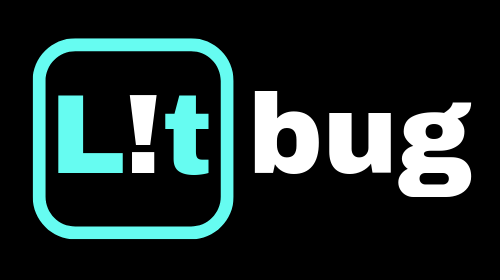My Life as a Bat is a fictional narrative written from the perspective of someone reflecting on their previous life as a bat and their experiences and thoughts related to that life. The passage explores themes of reincarnation, nightmares, vampire films, bats as deadly weapons, and the beauty of bats. It offers a unique perspective on these subjects and showcases Margaret Atwood’s imaginative storytelling style.
My Life as a Bat | Summary
The text titled “My Life as a Bat” is a fictional narrative that explores various themes through the perspective of the narrator, who claims to have been a bat in a previous life. The narrator begins by discussing the belief in reincarnation and suggests that those who find the concept amusing are dismissive of a widely held belief. They highlight the commercialization of previous lives, with people claiming to have been historical figures like Cleopatra, and the existence of a market for such beliefs.
The narrator reflects on the experiences and qualities of bats, suggesting that being an animal, particularly a bat, might be a reward or respite rather than a punishment. They note that bats are immune to emotions like pity, never inflict harm out of hate, and do not gloat. The narrator then shares their recurring nightmares, one involving a hostile encounter with a man in a summer cottage, and another where they seek refuge in their home cave only to find it sealed off, putting their survival at risk.
The text delves into the narrator’s gradual realization of their past life as a bat, citing preferences for the subtleties of dawn and dusk over the harshness of noon, and an uncanny familiarity with certain places. The narrator expresses disdain for vampire films, criticizing the inaccurate portrayal of bats and their abilities. They question the choice of transforming into a bat and wolf in vampire lore and humorously suggest alternative vampire animals like chipmunks, ducks, or gerbils.
The narrative then takes an unexpected turn, discussing an experimental plan during World War II to use bats as incendiary weapons. The plan involved strapping incendiary devices to bats and releasing them over German cities, causing fires when they sought shelter in dark places. However, the plan was eventually abandoned with the invention of the atomic bomb, rendering the fiery bat unnecessary.
Finally, the narrator contemplates the notion that their current human life might be the interlude, suggesting a longing to return to the life of a bat. They evoke vivid descriptions of bat life, emphasizing the sensory experiences, communal bonds, and their connection to the beauty of the natural world. The text concludes with a prayer-like invocation to a bat-like deity, expressing gratitude for the elements and attributes that sustain bats while seeking protection from the inexplicable evil represented by a hair-headed creature that walks at night.
My Life as a Bat | Analysis
“My Life as a Bat” presents a whimsical and introspective exploration of various themes, combining elements of fiction, personal reflection, and social commentary. Through the lens of the narrator’s purported past life as a bat, the text challenges traditional notions of identity, human-animal relationships, and the limitations of perception. One notable aspect is the playfulness with which the narrator approaches the concept of reincarnation. By presenting the belief in past lives as a widely accepted notion, the text invites readers to question their own assumptions about reality and challenges the idea of what constitutes a “serious” belief. This subversion encourages a more open-minded consideration of diverse perspectives and belief systems.
The text also raises questions about human attitudes towards animals. The narrator’s vivid descriptions of bat behavior and qualities, challenge the conventional hierarchy that places humans at the top. The bats’ immunity to emotions such as hate and pity presents an alternative view of animal consciousness and suggests that human emotions and judgments may not be as superior as commonly believed. Furthermore, the text critiques popular cultural representations of bats, particularly in vampire films. By highlighting the inaccuracies and caricatures often associated with bats in these portrayals, the narrative questions the impact of such media on public perceptions of animals. It prompts readers to consider how fictional representations can shape our understanding and treatment of the natural world.
The inclusion of the wartime experiment involving bats as combustible weapons introduces a somber undertone to the narrative. It prompts reflection on the ethical considerations surrounding the use of animals in warfare and the potential for human ingenuity to exploit and harm other species for destructive purposes. This subplot also underscores the contrast between the destructive capabilities of humans and the non-malicious nature of bats. By exploring the beauty and intricate details of bat life, the narrative encourages readers to appreciate the richness and diversity of the natural world, urging us to reconsider our relationship with other species.
My Life as a Bat | Significance of Title
The title, “My Life as a Bat,” holds significant meaning within the context of the text. It immediately introduces the central theme of the narrator’s supposed past life as a bat, framing the narrative around their unique perspective and experiences. The use of the possessive pronoun “My” suggests a personal and intimate connection to this life as a bat, emphasizing the first-person perspective throughout the text. The title also serves as a metaphorical device, inviting readers to consider the deeper implications of identifying with a bat. Bats are often associated with darkness, mystery, and the nocturnal realm, which can symbolize aspects of the human psyche or hidden truths. By adopting the life of a bat, the narrator explores unconventional perspectives, challenging societal norms and perceptions. Moreover, the title’s simplicity and directness draw attention to the concept of transformation and the potential for alternate identities or existences.
My Life as a Bat | Character Sketch
In the text “My Life as a Bat,” the narrator serves as the protagonist, sharing their experiences and reflections from their alleged past life as a bat. The narrator is an introspective and curious individual, open to exploring unconventional ideas and experiences. They exhibit a playful and imaginative nature, as demonstrated by their willingness to entertain the notion of having been a bat in a previous life. The narrator possesses a deep sense of introspection, questioning their own beliefs as well as societal norms. They exhibit a keen sense of observation and an ability to find meaning and significance in seemingly ordinary or overlooked aspects of life.
The protagonist shows a strong connection to the natural world and a reverence for the beauty found within it. They are particularly drawn to the world of bats, highlighting their admirable qualities such as their lack of hate or gloat and their resilience in the face of adversity. The narrator demonstrates empathy and a desire to challenge misconceptions about bats, critiquing popular culture’s inaccurate portrayal of these creatures. The protagonist also displays a sense of wit and humor, as seen in their ironic observations regarding vampire films and the commercialization of past lives. Their humor serves as a tool to both entertain and provoke critical thought.
My Life as a Bat | Themes
The concept of past lives and reincarnation is a recurring theme throughout the text. It explores the belief in previous lives and challenges readers to consider alternative perspectives on identity and existence.
The text prompts readers to question their preconceived notions and biases by presenting the world through the lens of a bat. It highlights the limitations of human perception and invites a reconsideration of the diversity of experiences and consciousness.
The narrative explores the relationship between humans and animals, particularly bats. It challenges the hierarchical view that places humans above other species and offers an alternative understanding of animals’ emotional capacities and value in the natural world.
The text portrays the beauty and intricacies of bat life, celebrating the natural world. It emphasizes the sensory experiences, communal bonds, and interconnectedness found in nature, encouraging a deeper appreciation and connection to the environment. The narrative critiques the portrayal of bats in popular culture, particularly in vampire films. It challenges the misrepresentations and stereotypes that can influence public perception of animals and highlights the need for more accurate and respectful representations.
The wartime experiment involving bats as weapons raises ethical questions about the treatment and exploitation of animals for human purposes. It prompts reflection on the consequences of human actions and the potential harm inflicted on other species. The text delves into the idea of transformation, both literal and metaphorical. It explores the possibilities of adopting different identities, challenging fixed notions of self, and embracing alternative perspectives.
My Life as a Bat | Literary Devices
The central premise of the narrator’s past life as a bat, functions as a metaphor, inviting readers to consider alternative perspectives and challenging conventional notions of identity and existence.
My Life as a Bat is rich in sensory imagery, creating vivid mental pictures and appealing to the reader’s senses. Descriptions of the narrator’s experiences as a bat and the natural world immerse the reader in the narrative and enhance its impact.
The text employs irony at times to create contrast or evoke a humorous tone. For example, the narrator’s critique of vampire films and their portrayal of bats as unrealistic creatures highlights the irony between popular representations and the narrator’s own experience. The text personifies bats by attributing human-like qualities to them. This literary device helps humanize the bat characters, enabling readers to connect and empathize with their experiences.
Bats in the text symbolize the marginalized and misunderstood aspects of existence. They represent an alternative perspective and challenge societal norms and perceptions.The text alludes to Cleopatra and references historical figures to illustrate the commercialization and cultural fascination with past lives. These references add depth and context to the narrative.
The repetition of certain phrases or descriptions, such as the recurring nightmares or the invocation of a bat-like deity, creates a rhythmic effect and reinforces important ideas or motifs. Atwood employs humor to provide a lighthearted tone and to engage the reader. It is often used to subvert expectations or challenge conventional wisdom.
My Life as a Bat | Structure and Style of the Narrative
The text follows a non-linear structure, blending elements of fiction, personal reflection, and social commentary. It does not adhere to a traditional narrative arc but instead presents a series of vignettes, memories, and musings connected by the overarching theme of the narrator’s past life as a bat. This fragmented structure allows for a more fluid exploration of various themes and ideas, inviting the reader to piece together the narrative through the narrator’s introspection.
The writing style in “My Life as a Bat” is characterized by its evocative and descriptive language. The text employs rich imagery, sensory details, and vivid metaphors to immerse the reader in the experiences and perspectives of the narrator. The prose is often poetic, creating a lyrical and imaginative quality to the writing. This style captures the essence of the narrator’s reflections and enhances the emotional impact of their words.
The writing method in the text can be described as a blend of introspection, social commentary, and storytelling. The narrator shares personal reflections and thoughts on various subjects, such as reincarnation, nightmares, popular culture, and the beauty of the natural world. The text employs humor and irony to engage the reader and challenge conventional wisdom. It combines serious contemplation with moments of lightheartedness, keeping the tone conversational and inviting.

